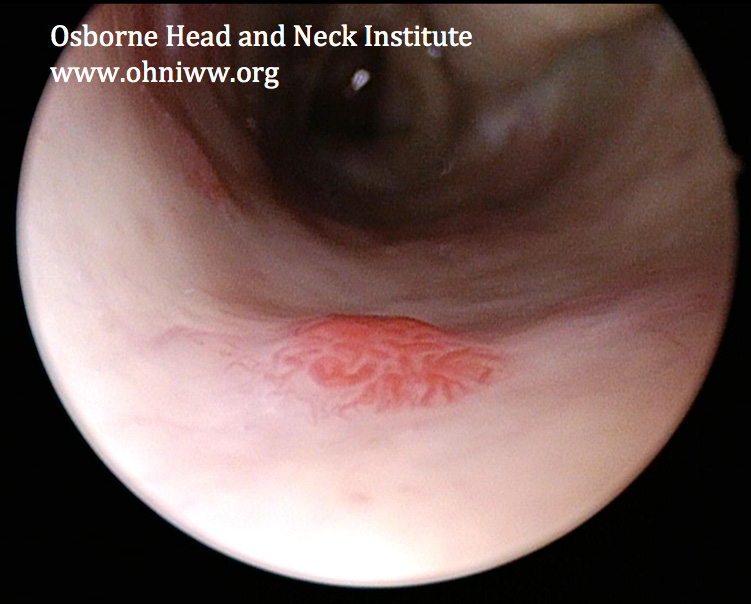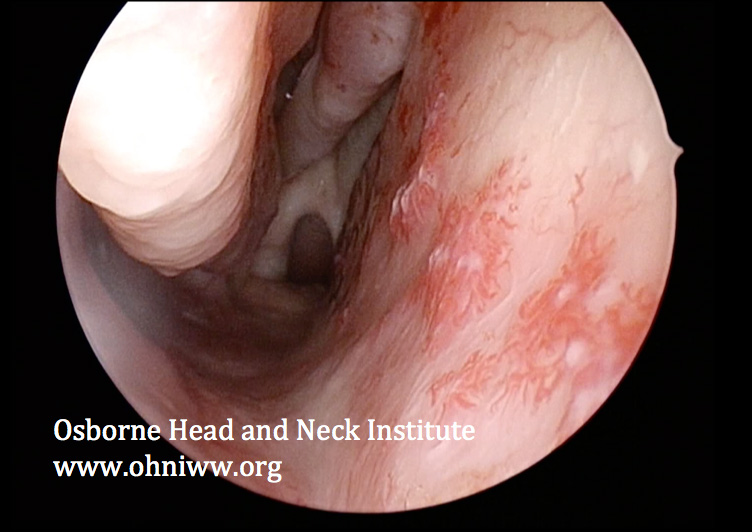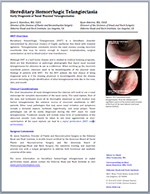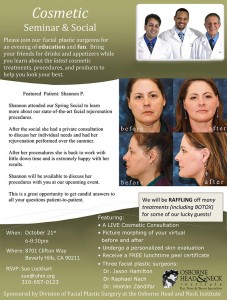- Hereditary Hemorrhagic Telangiectasia - May 25, 2016
- Hereditary Hemorrhagic Telangiectasia: Septal Perforation and Nose Bleeds - May 23, 2016
- Hereditary Hemorrhagic Telangiectasia: Epistaxis and Septal Perforation - May 18, 2016
- Wegener’s Granulomatosis: Autoimmune Disease and Multi-Focal Septal Perforation - May 9, 2016
- Kyle Korver: Facial Injury and Nasal Fracture - March 24, 2015
- Russell Westbrook: Facial Injury and Surgery - March 5, 2015
- Mega-perforation: Pushing the Limits of Septal Perforation Repair - November 26, 2014
- Septoplasty Complication and Septal Perforation - November 24, 2014
- Nose Picking (Rhinotillexis) and Septal Perforations: Why I should stop picking my nose…? - November 24, 2014
- Nasal Fractures, Septal Hematoma, and Septal Perforation: Simultaneous Rhinoplasty and Septal Perforation Repair - October 1, 2014
- India Medical Mission 2018 - November 1, 2018
- Sleep Disorders: Sleep Apnea and Upper Stimulation Therapy - August 25, 2015
- The Naked Vocalist Podcast Featuring Dr. Reena Gupta - May 27, 2015
- New Therapy for Sleep Apnea – First Sleep Pacemaker placed in California at Osborne Head and Neck Institute. - December 12, 2014
- Boxer’s Ear: Can your ear explode? - December 12, 2014
- Nose Picking (Rhinotillexis) and Septal Perforations: Why I should stop picking my nose…? - November 24, 2014
- Deviated Septum and Septal Perforation - July 28, 2014
- Hereditary Hemorrhagic Telangiectasia: Nasal Septal Perforation Repair - June 25, 2014
- Dr. Mantle recognized at the Beverly Hills Medical Science Academy Awards - May 8, 2014
- Commonly Misdiagnosed Pathologies: Arteriovenous Malformations - April 9, 2014
Early Diagnosis of Nasal Mucosal Telangiectasias
HHT Overview
Hereditary Hemorrhagic Telangiectasia (HHT) is a hereditary disorder characterized by abnormal clusters of fragile capillaries that bleed with minimal agitation. Telangiectasias, commonly involve the nasal mucosa causing recurrent nosebleeds that may be severe enough to require hospitalization, surgical cauterization as well as blood and/or iron transfusions.
Although HHT is a well know disease and is studied in medical training programs, there are few illustrations or pathologic photographs that depict nasal mucosal telangiectasias for clinicians to use as a reference. When working-up the recurrent nosebleed patient, clinicians need to be knowledgeable of the physical exam findings of patients with HHT. For the HHT patient, the best chance of being diagnosed early is if the treating physician is knowledgeable about the disease process including simple identification of what telangiectasias look like in the nose, skin, and mouth.


Figures: HHT associated nasal telangiectasias. Note the dilated nest of capillaries surround by normal pink mucosa of the floor of the nose (above) and nasal septum (below).
Clinical Considerations
For ideal visualization of nasal telangiectasias the clinician will need to use a nasal endoscope for complete examination of the nasal cavity. The nasal septum, floor of the nose, and turbinates must all be thoroughly examined as each location may harbor telangiectasias, the common source of recurrent nosebleeds in HHT patients. Other nasal pathologies that may cause nasal irritation and symptoms include a deviated septum, turbinate hypertrophy, and nasal polyps. These pathologies can all be easily diagnosed during the HHT exam for nasal telangiectasias. Treatment usually will include some form of cauterization of the abnormal vessels. Care should be taken to not treat aggressively as over-cauterization of the nasal septum can lead to a septal perforation (HHT septal perforation).
Surgeon Comments
Dr. Jason Hamilton, Director of Plastic and Reconstructive Surgery at the Osborne Head and Neck Institute, is double board certified by the American Board of Facial Plastic and Reconstructive Surgery and the American Board of Otolaryngology/Head and Neck Surgery. His extensive training and expertise provide him with a unique perspective to address both functional and aesthetic concerns of the nose.
For more information on hereditary hemorrhagic telangiectasia or septal perforation repair, please contact the Osborne Head and Neck Institute or visit www.perforatedseptum.com.




